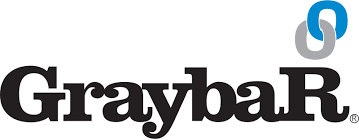Digging into Graybar’s 2023 $11 Billion Performance
 Recently Graybar announced record sales of $11 billion and, more importantly, a sales increase of 4.8%. Net income increased to $463 million.
Recently Graybar announced record sales of $11 billion and, more importantly, a sales increase of 4.8%. Net income increased to $463 million.
A “record” is nice, but any growth will generate a new record.
While they serve some of the same markets, Graybar is much less industrially-oriented than Wesco, who reported a decrease, and a decrease in their EES group.
And this performance is in the face of challenging commodity pricing. According to a recent Border States newsletter on Commodity Trends, which tracked February 2023 to February 2024,
- Copper – down 7%
- Aluminum – down 16%
- 3/4-inch Steel – up 37%
- 4-inch PVC – down 28%
With the key being copper given the percentage of a distributor’s business that wire / cable represent.
Rather than trying to dissect Graybar’s brief press release, I took a read through their 10-K for insights.
2023 Graybar Observations
(And italics are my comments)
- 345 locations in the US and Canada serving 150,000 customers.
- 21 RDCs across the business.
- 9500 or so employees
- 5100, or 53.6%, in sales / service roles
- One of its subsidiaries does some private labeling of lighting fixtures.
- While they say that there is “thousands” of local and regional distributors, they also share that the top 5 distributors represent 45% of the US market. (while there may be “thousands”, the number of significant distributors is rapidly diminishing.)
- Graybar comments that “its services distinguish them from many of their competitors.” (This begs the question of is this aspirational? Qualitative or anecdotal feedback or are the actively measuring this and generating a customer satisfaction index … Graybar … perhaps we can talk! All kidding aside, distributors should solicit feedback and quantitatively gather insights from customers of all sizes and roles.)
- 60% of orders were filled through stock in 2023, down from 65% in 2022. (is this due to downsizing inventory? Change in customer request and hence more projects? Non-stock manufacturers having success in winning business? Increased orders filled through rep warehouses? Due to supply chain issues or a “one-off.” This is something that bears watching when tracking Graybar on a multi-year basis.)
- 50% of purchases come from top 25 manufacturers (a good metric for every distributor to consider and should be by geography and market segment.)
- There is mention of their training initiative with an emphasis on “a large library of online courses” as well as training conferences and development programs for interns, employees, sales, managers and leaders (Graybar is investing, probably more than most distributors, into training. This can be a long-term differentiator and could be correlated to employee churn rates as well as customer satisfaction and sales / market share performance.)
- While Graybar has an experienced management team, its senior management team may be coming up to retirement age, assuming Graybar has mandatory retirement age. Of the 7 executives mentioned in the report, 5 are over 61 and of the other 2, one is their HR person. The company, historically, is very good with succession planning and preparing people for their next role.
- Graybar’s stock is 100% owned by active and retired employees. Interestingly, the company issued dividends totaling $3.00 in 2023, down from $4.00 in 2022. (This may be indicative of the electrical market reverting to its norm from the COVID fueled growth of the prior two years. The rate of growth has decreased, supplier rebate income has decreased, etc.)
- Gross margin rate declined from 20.4% to 20.1% due to competitive pressures (and lack of supplier price increases which also helps distributors in multiple ways.)
- SG&A increased 5.7% due to higher compensation, rent and maintenance expenses. SG&A represents 13.8% of net sales. (So, expenses rose at a faster rate than sales and profits. Perhaps investing for the future? Given Graybar’s acquisitions, it would be interesting to segment this by Graybar vs North American Subsidiaries (which is their acquisitions). Which “performs” better?)
- Income from operations declined 2.5% to $463.4 million from $452.9 million. This resulted in a net income of 4.2%.
- By end-user segment
- Construction, which represented 58.4% of the business in 2023 and 56.8% in 2022, increased by 7.8%.
- Industrial and Utility, which was 18.3% of the business in 2023 and 17.2% of the business in 2022, increased by 11.1%.
- For Graybar’s CIG group sales, which were 23.3% of the business in 2023, down from 26% in 2022, decreased 5.9%.
- The company spent $378.8 million on its 2023 acquisitions but only $83.7 million in 2022. In 2023 there were two acquisitions (Shepherd Electric and Valin)
- The deals were financed by “cash on hand and short-term borrowings.” (which makes them affordable, and, with an almost $500 million net profit, there is enough firepower for more deals as the industry continues with its “arms race.” Desirable distributors are still in play!)
- The two acquisitions generated $301.5 million in revenue for Graybar in 2023 (with neither being a full year of revenues.)
- In 2021 the company spent $89.7 million on acquisitions.
Take Aways
- Obviously, a declining growth rate from the prior two years but that is expected given the uniqueness of the past few years. This is on par with the grow rate that should be expected AND it was presumably constrained due to the Schneider Electric supply delays which have a ripple effect on other product sales that Graybar would have generated. These revenues have been delayed and will be realized in 2024 or 2025, something Graybar has no control over.
- Graybar’s relationship with NECA, along with their relationship with other NECA Premier Partners, a number of which are top 25 suppliers to Graybar, presumably is very beneficial in winning large projects, of which there are many going on around the country … especially data centers.
- With almost 54% of its associates in sales and service, the investment in training is critical to ongoing success. While Graybar did not address employee turnover, an investment in training is critical to long-term success for every distributor. For many independents who cannot afford a significant financial investment in training, having a training strategy and leveraging the training services they are already paying for via their marketing group, possibly NAED, and other associations they may belong to, should be a key part of their annual planning. While you don’t want to lose a trained employee, what is worse is keeping an untrained employee.
- While Graybar’s SG&A went up at a higher rate, they attributed this to higher compensation (and some other issues.) The reality is salaries, health insurance and labor-related taxes continue to rise. Generating productivity is critical. This is an ongoing issue for distributors and needs to be correlated to key KPI’s.
Considering that DISC projects that 2023 will end up a little over 2% overall, Graybar took market share within the industry, and especially in the construction (Contractor) and Utility / Industrial segment. (and if your company doesn’t subscribe to the DISC data, you should at least get the DISC Flash Report.)
How do you see Graybar performing in your market? As a manufacturer, any observations? If you’re a Graybar associate, and feel free to share anonymously, any observations?























